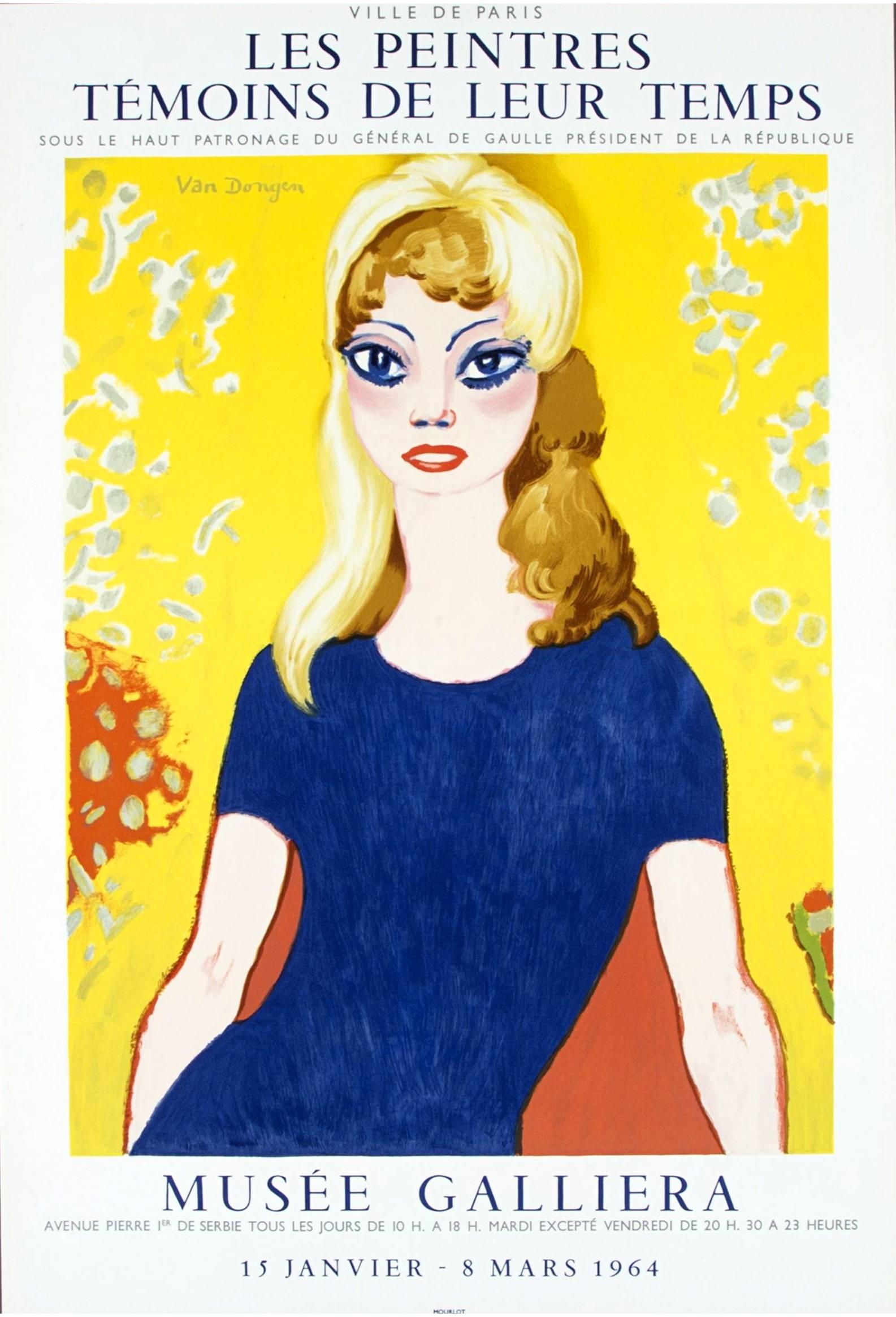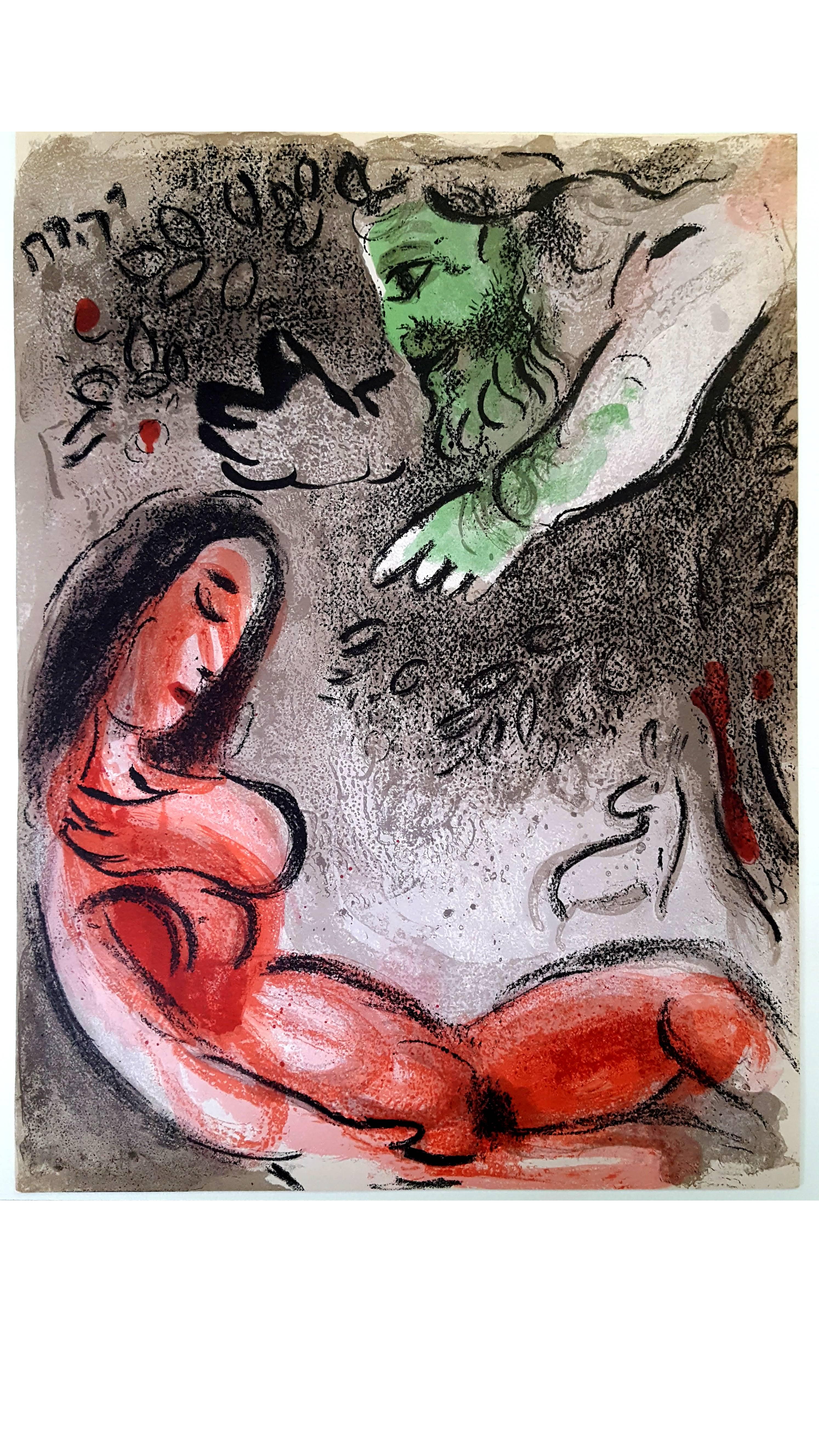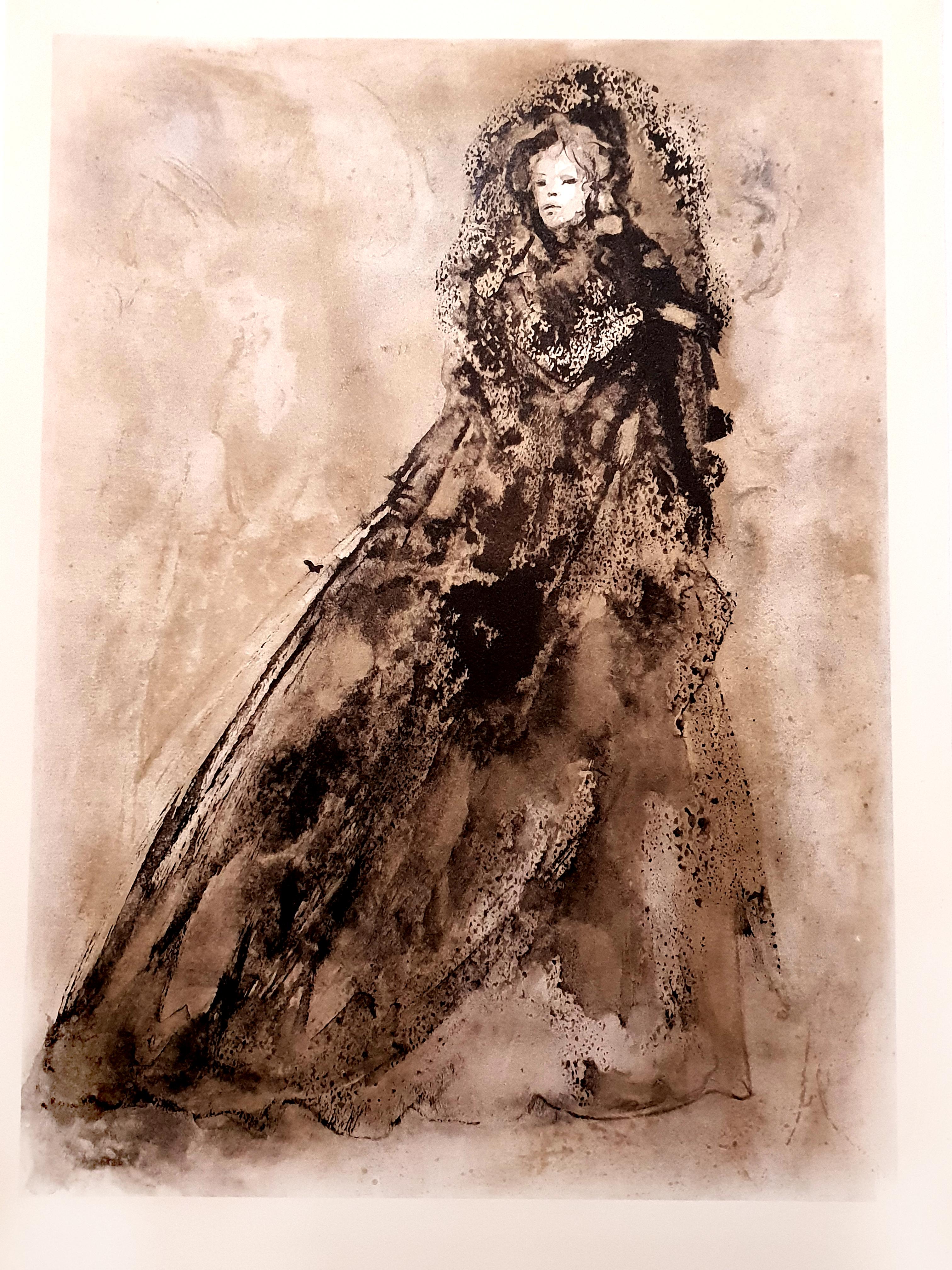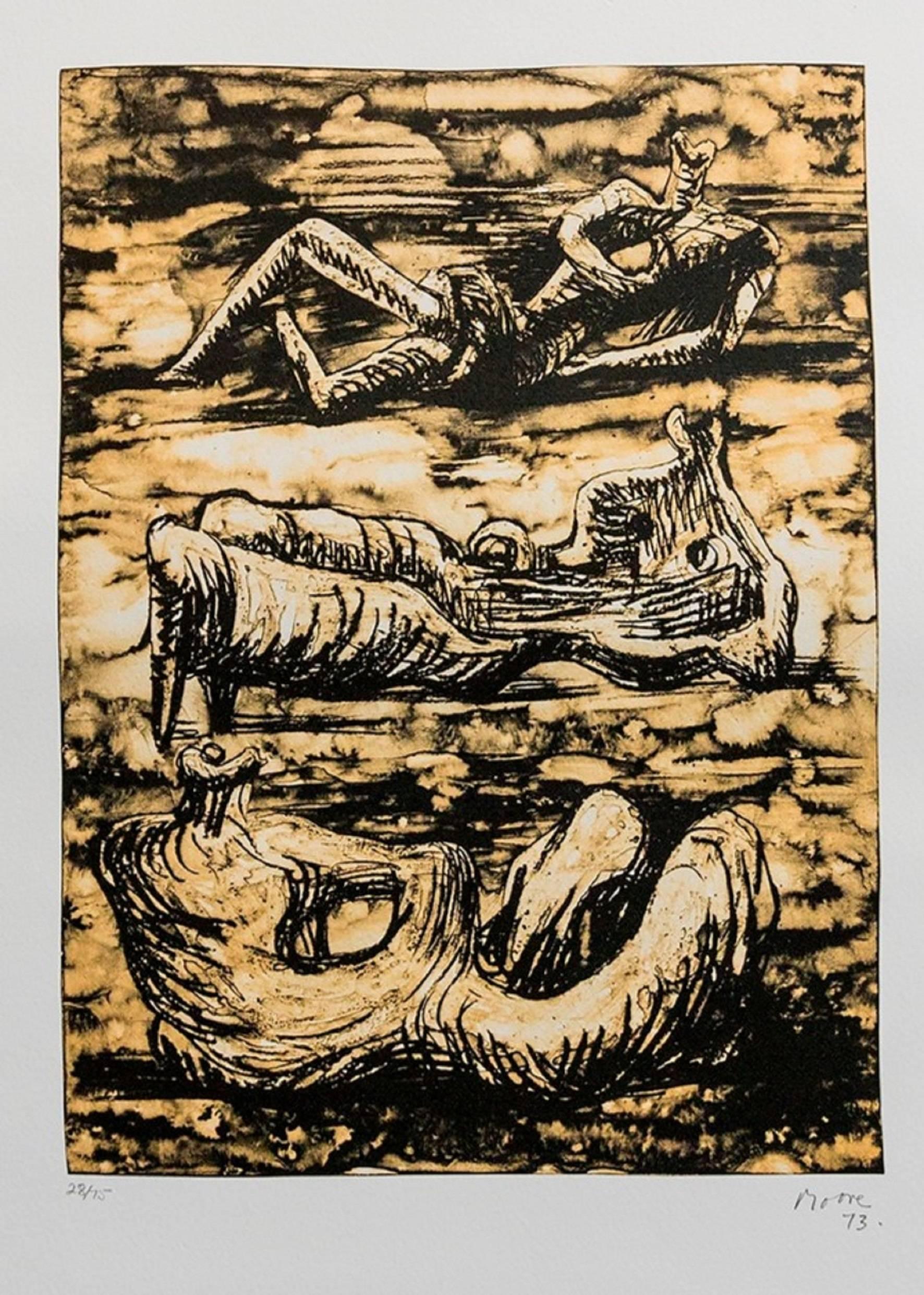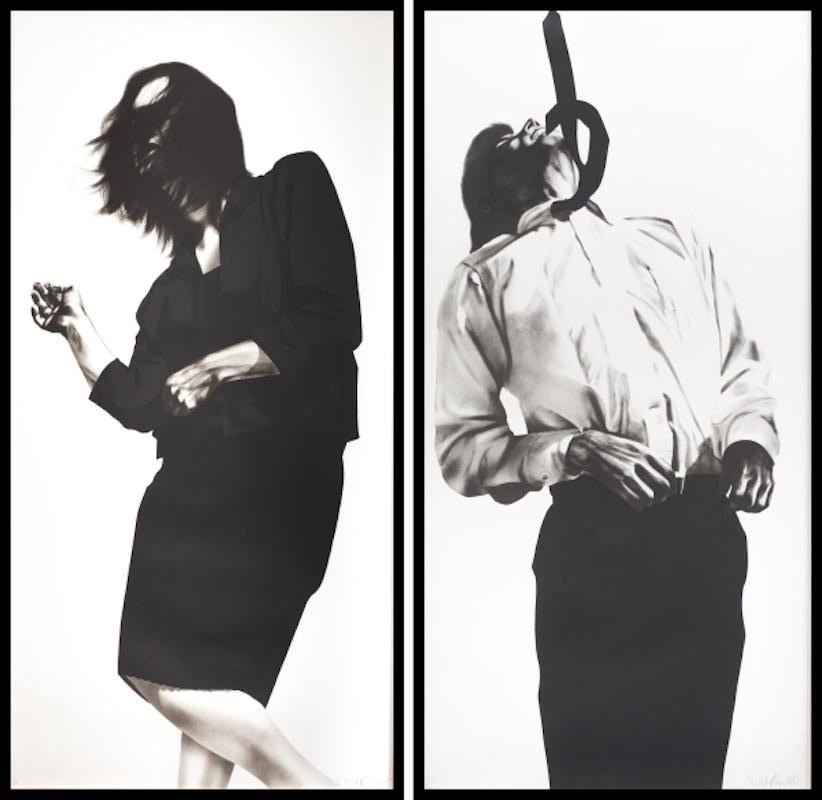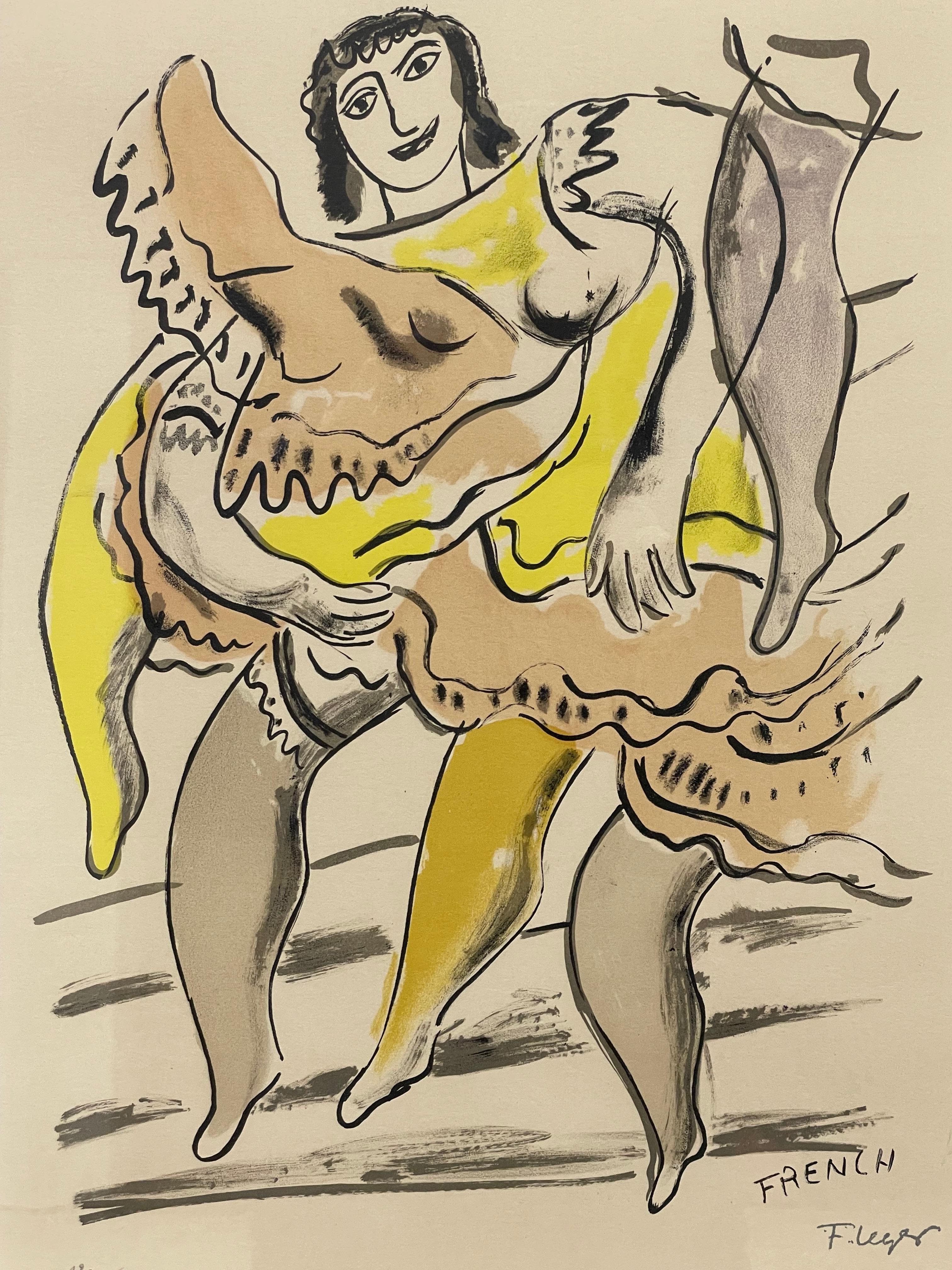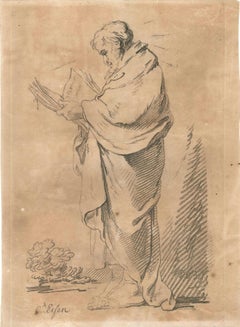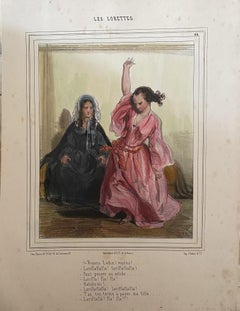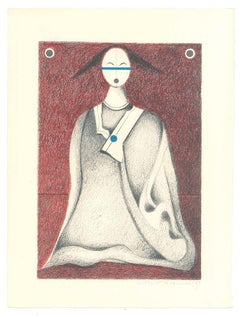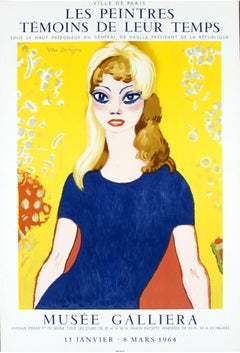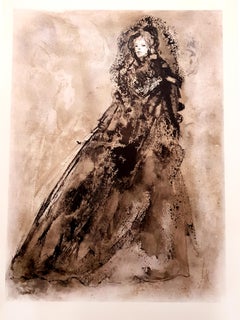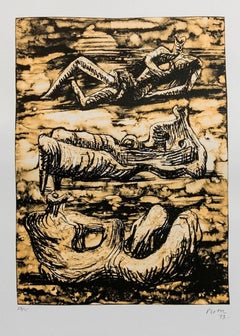Paul GavarniLes Invalides du Sentiment - Original Lithograph by Paul Gavarni - 1850s 1850s
1850s
About the Item
- Creator:Paul Gavarni (1804 - 1899, French)
- Creation Year:1850s
- Dimensions:Height: 15.36 in (39 cm)Width: 10.63 in (27 cm)Depth: 0.04 in (1 mm)
- Medium:
- Movement & Style:
- Period:
- Framing:Framing Options Available
- Condition:Insurance may be requested by customers as additional service, contact us for more information.
- Gallery Location:Roma, IT
- Reference Number:Seller: T-1326281stDibs: LU650310530142
Paul Gavarni
Paul Gavarni was the nom de plume of Sulpice Guillaume Chevalier, a French illustrator who was born in Paris. The story is told that he took his name from Gavarnie in Luz-Saint-Sauveur, where he had taken a journey into the Pyrenees. His first published drawings were for the magazine Le Journal des Dames et des Modes. At the time, Gavarni was barely 30-years old. His sharp and witty drawings gave these generally commonplace and unartistic figures a life-likeness and an expression which soon won him a name in fashionable circles. He gradually gave greater attention to this more congenial work, and ultimately stopped working as an engineer to become the director of Journal Des Gens du Monde. Gavarni followed his interests and began a series of lithographed sketches in which he portrayed the most striking characteristics, foibles and vices of the various classes of French society. The letterpress explanations attached to his drawings were short, but were forcible and humorous, if sometimes trivial, and were adapted to the particular subjects. At first, he confined himself to the study of Parisian manners, more especially those of the Parisian youth. Most of his best work appeared in Le Charivari. Some of his most scathing and most earnest pictures, the fruit of a visit to London, appeared in L'Illustration. He also illustrated Honoré de Balzac's novels and Eugène Sue's Wandering Jew. Among his illustrated works were Les Lorettes, Les Actrices, Les Coulisses, Les Fasizionables, Les Gentilshommes bourgeois, Les Artistes, Les Débardeurs, Clichy, Les Étudiants de Paris, Les Baliverneries Parisiennes, Les Plaisirs champêtres, Les Bals masqués, Le Carnaval, Les Souvenirs du Carnaval, Les Souvenirs du bal Chicard, La Vie des Jeunes Hommes and Les Patois de Paris. He had now ceased to be the director of Des Gens du monde but he was engaged as an ordinary caricaturist of Le Charivari and, while making the fortune of the paper, he made his own. His name was exceedingly popular and his illustrations for books were eagerly sought for by publishers. A single frontispiece or vignette was sometimes enough to secure the sale of a new book. Always desiring to enlarge the field of his observations, Gavarni soon abandoned his once-favorite topics. He no longer limited himself to such types as the Lorette and the Parisian student or to the description of the noisy and popular pleasures of the capital but turned his mirror to the grotesque sides of family life and of humanity at large. But while showing the same power of irony as his former works, enhanced by a deeper insight into human nature, they generally bear the stamp of a bitter and even sometimes gloomy philosophy. At one point Gavarni was imprisoned for debt in the debtors' prison of Clichy. After his release, he published his experiences in a work called L'Argent (Money). Gavarni visited England in 1849. On his return, his impressions were published in the book Londres et Les Anglais, illustrés par Gavarni (1862) by Émile de la Bédollière. Most of these last compositions appeared in the weekly paper L'Illustration. In 1857, he published in one volume the series entitled Masques et visages and in 1869, about two years after his death, his last artistic work, Les Douze Mois, was given to the world. Gavarni was much engaged, during the last period of his life, in scientific pursuits and this fact must perhaps be connected with the great change which then took place in his manner as an artist. He sent several communications to the Académie des Sciences, and until he died on 23 November 1866, he was eagerly interested in the question of aerial navigation. It is said that he made experiments on a large scale to find the means of directing balloons, but it seems that he was not so successful in this line as his fellow artist, the caricaturist and photographer, Nadar.
- ShippingRetrieving quote...Shipping from: Monaco, Monaco
- Return Policy
More From This Seller
View All1850s Modern Figurative Prints
Lithograph
Late 18th Century Modern Figurative Prints
Lithograph
19th Century Modern Figurative Prints
Lithograph
1960s Modern Portrait Prints
Lithograph
Late 19th Century Modern Figurative Prints
Lithograph
Late 20th Century Modern Figurative Prints
Lithograph
You May Also Like
1960s Modern Portrait Prints
Lithograph
1960s Modern Figurative Prints
Lithograph
1960s Modern Nude Prints
Lithograph
1970s Modern Abstract Prints
Lithograph
20th Century Modern Portrait Prints
Lithograph
1950s Modern Figurative Prints
Lithograph
